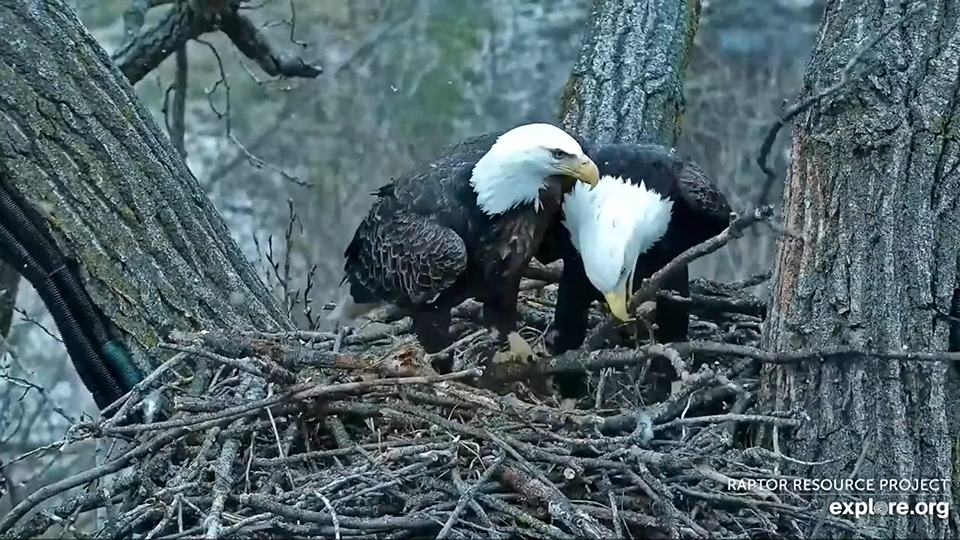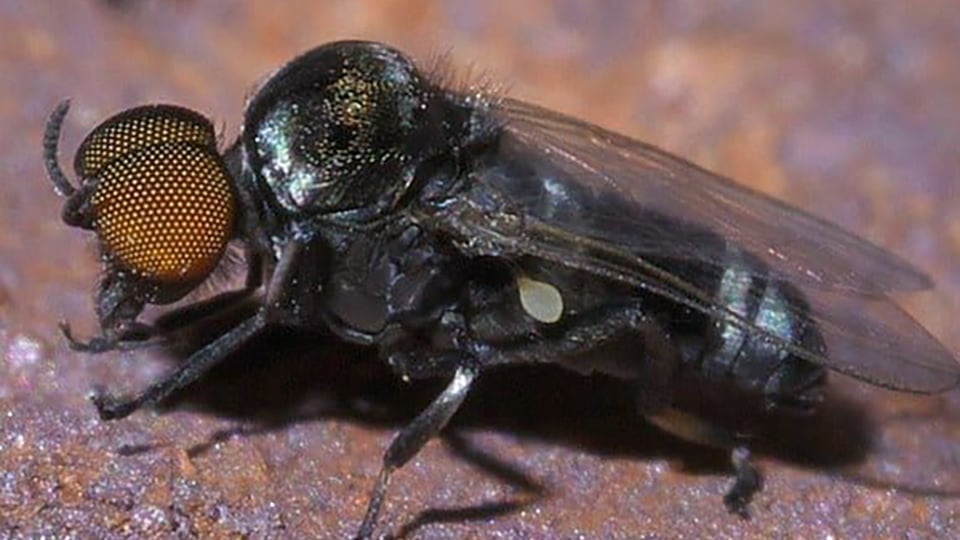When I say ‘bird’s nest’, you know the type of nest I’m talking about, right? It could be a bald eagle’s stick platform high up in the branches of a tree. Or perhaps a peregrine falcon’s scrape in dirt, sand, or gravel on a shallow cliff ledge. Or maybe the burrows that bank swallows and belted kingfishers excavate in dirt, the cavity nests that woodpeckers excavate in dead wood, or the woven nests that orioles and weavers build.
When I think of bird nests, I think of the cupped nests I collected as a child. But birds nest in a variety of ways and places, creating nests from twigs, sticks, moss, grass, fur or hair, roots, bark, leaves, pine needles, feathers, lichens, paper, insect cocoons, snakeskin, saliva, and other materials. They nest high in trees, but they also nest on the ground, under the ground, in chimneys and caves, and in active wasp nests. Some birds build elaborate nests while others create a shallow scrape or take another bird’s nest.
Nests help birds attract and keep mates, reduce ectoparasites, and keep eggs warm and dry in the worst of weather. Let’s take a closer look at the ways in which sexual selection, parasites, and weather influence nest design.
Sexual Selection
How does sexual selection play a role in nest design? It goes something like this: birds that build awesome nests relative to other members of their species must be healthy, high-quality mates. Think about bald eagles! As we’ve seen at Decorah and Decorah North, eagles spend a lot of time procuring and hauling wood and soft materials into the nest. This is an energetically costly activity that requires them to be in good shape: well-fed, skilled at flying, and relatively parasite-free. While different things indicate quality to different species of birds, large nests appear to signify quality to bald eagles.

November 12, 2022: HM, HD, and stick negotiations!
Both bald eagle parents build and maintain their nest, but males tend to spend more time getting sticks just right, preparing the nest bowl, and building the egg cup. What’s going on? Many female birds adjust their reproductive efforts in relation to their mate’s nest-building activities. The more time he spends working on the nest, the more time and energy she puts toward reproductive processes, including copulation. The end result? A higher chance of reproductive success for both of them!
What should we watch for in our eagles? At and around the 45th parallel, courtship is firing up as eagles work on their nests. Both sexes bring in sticks and nesting material, although (as we said above) male eagles usually spend more time placing sticks, arranging materials, and preparing the egg cup under the watchful eyes of their mates. Watch for these behaviors at the Decorah, Decorah North, and Fort St. Vrain nests.
Eagle Intelligence
We joke about people being bird-brained, but birds are smarter than we give them credit for and intelligence is part of the sexual selection package. Building a nest is harder than it looks and requires a whole host of things: access to food (which implies hunting ability and understanding of a territory), strength (which implies access to food and a body relatively free of parasites), and flight skills (ditto). An intelligent bird will usually make better decisions about maximizing energy gain, procuring food, and hauling and placing sticks. Its intelligence should help it live longer and build a sexier nest, which in theory will lead to more copulation, more fertilized eggs, and offspring that inherit their parents’ traits.
Parasites
Bird parasites include lice, fleas, flies, mites, ticks, leeches, fungi, and bacteria. We’ve seen the damage that blackflies and hippoboscids can do: killing young falcons, driving young from the nest too early, and delaying physical development. Birds have a wide variety of responses to parasites, including molting feathers, preening, and bringing toxic materials into their nests.

The Dreaded Black Fly (Simulium)
Back in 2013, we watched two red-tailed hawks on the now-defunct Eaglecrest Wildlife cam. Male Spot brought green plant material (probably blue oak branches) into the nest on a regular basis. Oak contains high levels of monoterpenes and isoprene, which helps reduce parasites and fungi and may have signaled fitness to female Stitch in the same way that a large nest might signal quality to a female eagle. You can find a blog on greenery and parasites here: https://raptorresource.blogspot.com/2013/04/red-tailed-hawks-nest-greenery-and-ants.html.
We haven’t seen bald eagles carry in greenery, but their nests attract mice. An eagle’s nest provides food, shelter, and safety from serious mouse predators like fox and owls. While bald eagles sometimes eat mice, they aren’t much more than hors d’oeuvres compared to prey like pigeons, trout, and squirrels, so the risk is well worth the payout! In return, mice devour leftovers and help keep the nest a little cleaner and presumably parasite-free than it would be otherwise. A behavior linked to sexual selection (nice nest!) leads to a food-filled nest, which leads to ‘mouse guests’ that help keep the nest clean. Cold-weather nesting also helps reduce parasites, since most invertebrates aren’t very active in freezing weather, although it means that parent birds need to be ready for the challenges that winter brings. This leads us to…
Environmental Adjustment
In 2013/2014, the Decorah eagles produced three young in the teeth of the worst winter since the 1970s. How do northern eagles incubate eggs and brood young in sub-zero weather, ice, and snow? A male eagle’s attention to the nest bowl and egg cup – rolling, scraping, nest digging, and layering and molding soft materials – reinforces his relationship with his mate and creates a warm, insulated incubation chamber that can weather rain, snow, and sub-zero temperatures.
When you watch our birds work on their nests, remember that much more is going on than meets the eye! Sexual attraction, courtship and flirtation, proof of fitness, and weather and parasite protection all play important roles in the design of nests – and nestorations (like house work) are never done!
November 11, 2022: Stick follies at N1
Things that helped me learn and write about this topic:
Did you know?
There is a bird that nests inside a wasp’s nest! Follow this link to read more about Violaceous Trogon’s extreme housing practices!
Image credits
 The Raptor Resource Project
The Raptor Resource Project The Raptor Resource Project
The Raptor Resource Project